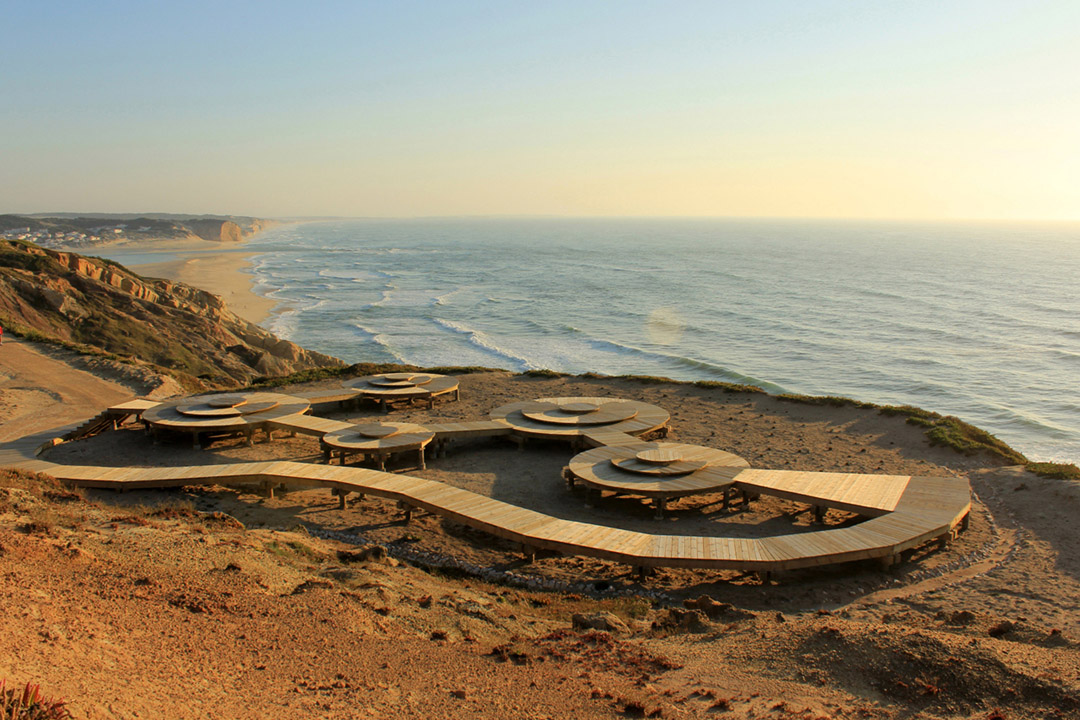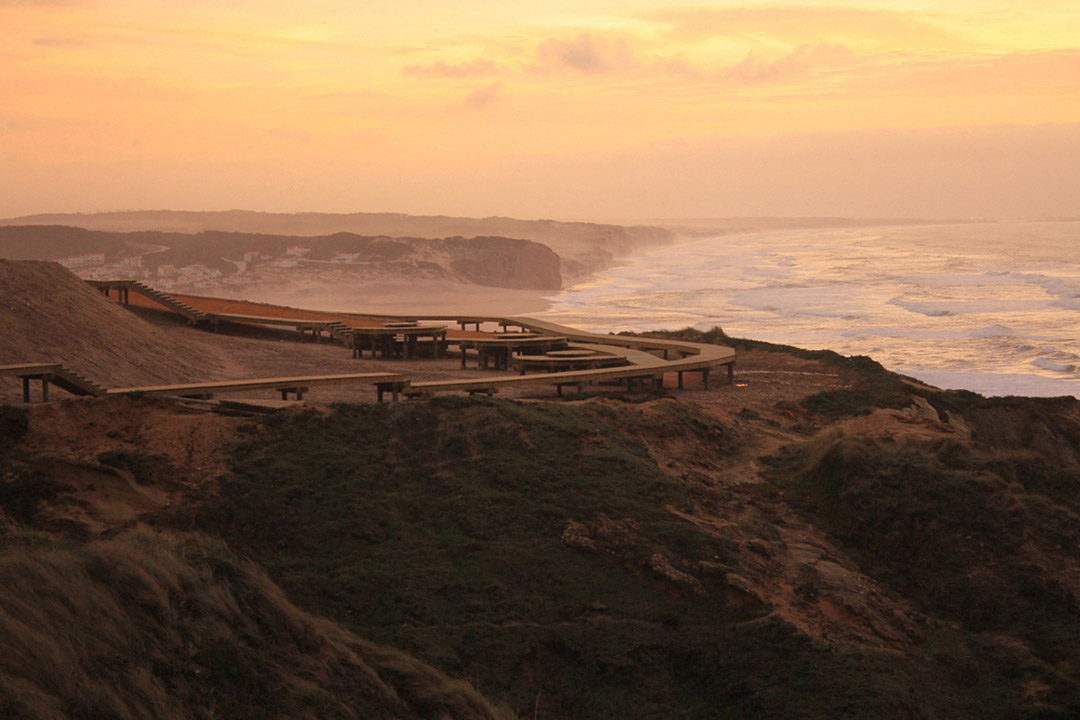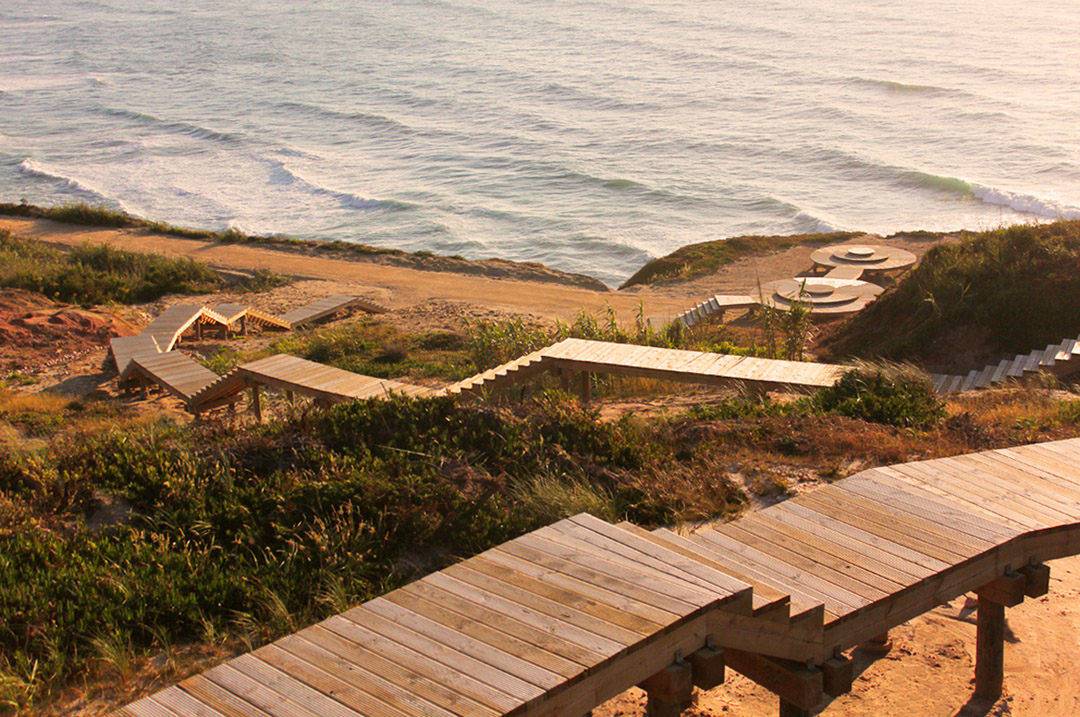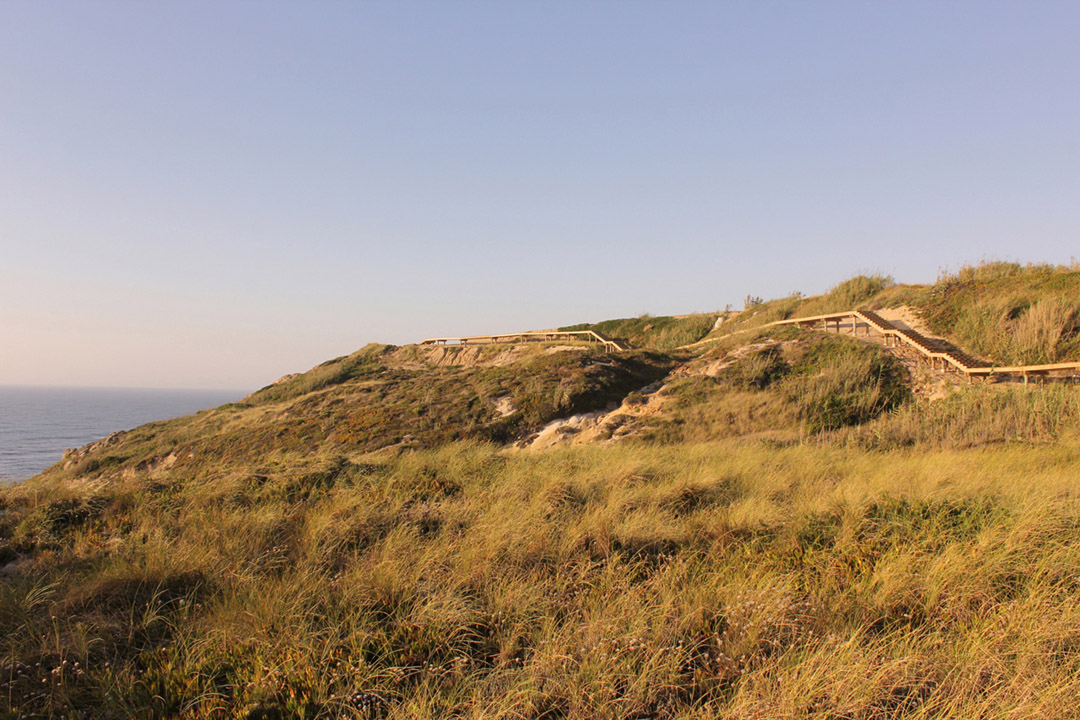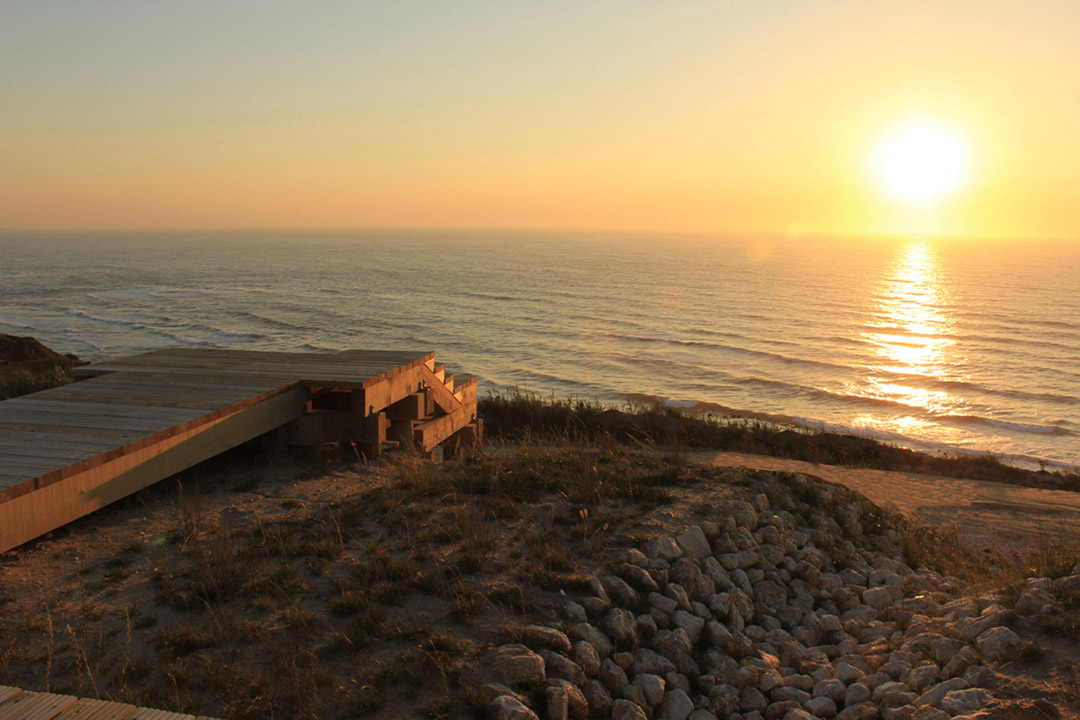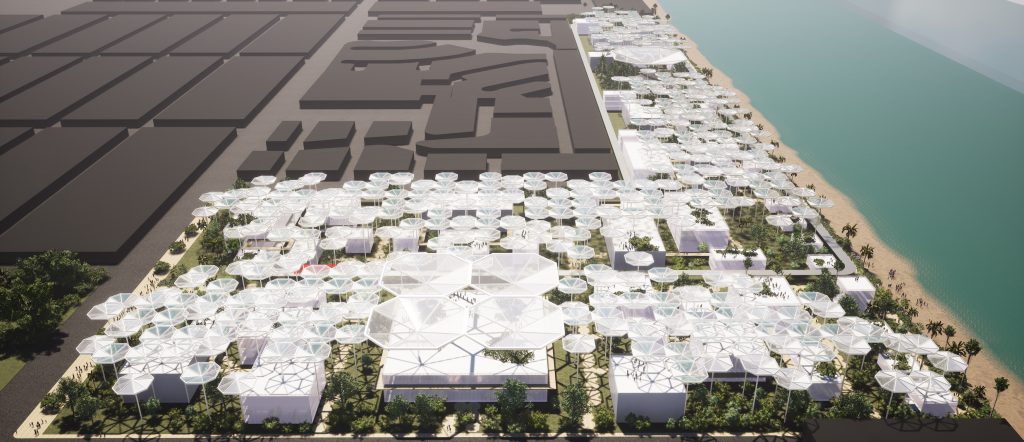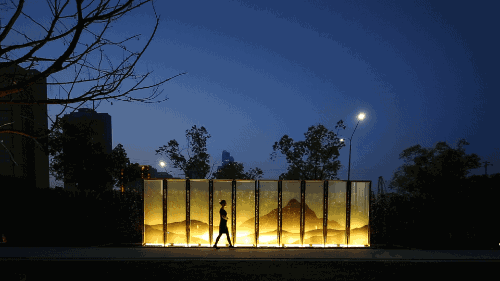生于1982年的景观设计师Nádia Schilling最近完成了葡萄牙海滨沙丘及峭壁生态修复改造项目“Projecto de Requalifica??o das Arribas”第一阶段。第二阶段在2014年陆续执行。
There’s a new way of experiencing the landscape in Foz do Arelho, Portugal. The project “Requalifica??o das Arribas”, that aimed at the first the cliffs and dunes rehabilitation and the transformation of the degraded areas – used as an unsafe parking space for decades, with no regard for it’s character and ecological aspects – created new spaces that allow different forms of connecting to the natural landscape, and was sought to preserve it’s intrinsic values. The natural elements won more expression, while the visitor is invited to relate to a scenic and dramatic landscape.
众所周知,海滨沙丘有着极为脆弱的生态系统。曾经,人们驱车前往海滨,在不恰当位置的停车场停车后,再进行娱乐。生态地在人类和自然日复一日的侵蚀下被破坏并变得不安全。为此,这个项目开始运行,旨在恢复和改建海滨脆弱的生态,并根据场地性格和生态创造突出自然景观的新价值空间,最后将这些价值空间联系起来,保证游客安全和谐的与海滨共处,同时领略到涤荡人心的壮丽美景。
It’s well known that cliffs and dunes have an enormous ecological sensitivity and are subjected to a natural erosion caused by the sea and wind.
However, over the years it has been observed along this coastline that erosion was largely accelerated by the misuse of these areas. The access to vehicles, the devastation of its vegetation, the large amounts of water coming from the new built surroundings without any control, among other factors, led to its gradual destruction and created dangerous conditions that risked the visitor’s safety.
卡尔达什达赖尼亚市政府支持里斯本大学对场地进行测量,规划就是在此基础上进行。规划路径主要为架空的木栈道。木栈道是一种能够融于自然环境的路径,将木栈道架空则不影响场地的排水,并对场地的生态干预降到最小,有助于恢复场地生态。
For a keen observer it was clear that these problems existed and that an urgent intervention was necessary. Drainage should be planned, natural vegetation needed to be reestablished to promote erosion control and conditions should be created for the visitors truly experience the landscape.
Before advancing with sketches, a study was conducted by the University of Lisbon, commissioned by the Municipality of Caldas da Rainha, which defined, after tests carried out on site, the cliffs risk range. It was only based on that information, along with a survey of all the constraints, that the main plan was developed.
For this plan, the main idea found for these problems consisted in the connection of the most significant lookouts with a raised wooden walkway, that would define paths that people can use safely and that would work as a barrier to more sensitive areas. As a result, these areas would be freed to an ecological set of actions that led to the withdrawal of cars, to a controlled drainage, and to the recovery of it’s biophysical dynamics, as first step to restore the native vegetation, so unique and rare. Considering the severe days during winter, some locations were planned to let a small number of cars still go to secure areas near the main road, and enjoy the view.
While thinking of the raised wooden walkway, it was crucial to merge the artificial structure with the natural elements. The walkway should adapt to the existing topography and to be almost invisible from the surroundings. This way, and although the still recent vegetation will grow and turn the structure more discrete, the design was developed thinking of simple patterns, so distinctive of the natural cliff and dune systems: the fractals.
悬崖是登高望远停留冥想的好去处。在地形多变,层次丰富的场地中木栈道自如且层次分明的出现在恰当的位置,每个层次和停留点都有独特的风景可观。
Cliffs are particularly looked as contemplative and reflection spaces. This way, the organic path was built so it could hold different areas of contemplation with different levels, letting the user get to higher view points or merge/weld/fuse with the landscape in more discrete spots. The wide lookouts now divided into small high platforms, allow each individual to have its own space, some privacy, and will include a swivel chair, so that the user can choose where to look.
这个项目的第一阶段时生态修复的基础,在安放路径的同时也对原生植被进行了补充,但若要完全控制入侵物种则在下一阶段还有很多工作要做。在这个项目中,所有的材料和工艺都是生态的、安全的、耐久的。
This project was an important step in the renaturalization of degraded areas, and created conditions for its recovery, which included the replanting of native vegetation. Unfortunately, there’s still a lot to do, regarding a fully control of the invasive species. All materials and construction techniques were chosen considering the ecological aspects, safety and the structure’s durability.
